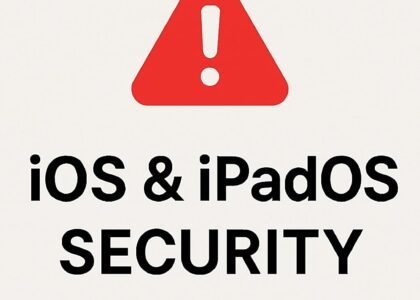Effective risk assessment in project management is essential for several reasons. Firstly, it allows project managers to identify potential risks before they occur and of course with conducting a thorough analysis of the project’s objectives, timeline, and resources, project managers can identify any potential risks that may arise during the project’s lifecycle. This early identification of risks enables project managers to develop contingency plans and allocate resources accordingly, minimizing the impact of these risks on the project’s success.
Secondly, risk assessment helps project managers prioritize risks based on their potential impact on the project. Not all risks are created equal, and some may have a more significant impact on the project’s objectives than others. By evaluating and analyzing the potential risks, project managers can prioritize them based on their severity and likelihood of occurrence. This allows project managers to focus their efforts on mitigating the most critical risks, ensuring that the project stays on track and achieves its goals.
In addition to identifying and prioritizing risks, risk assessment also helps project managers develop appropriate risk response strategies. Once the risks are identified and prioritized, project managers can develop strategies to address each risk effectively. These strategies can include risk avoidance, risk mitigation, risk transfer, or even accepting the risk and developing a contingency plan. By having a well-defined risk response strategy in place, project managers can effectively manage and mitigate risks, minimizing the negative impact on the project.
Secure Your Assets
XEye Security offers you the ultimate proactive and cost-effective approach to combating all types of cyber threats, ensuring compliance, and implementing robust security measures.
Furthermore, risk assessment promotes transparency and communication within the project team and stakeholders. By involving the team members and stakeholders in the risk assessment process, project managers can gather valuable insights and perspectives. This collaborative approach not only helps in identifying risks that may have been overlooked but also ensures that everyone is on the same page regarding the potential risks and their impact on the project. It fosters a culture of open communication and proactive problem-solving, which is crucial for the success of any project.
For businesses to survive, they will need to build organizational resilience for climate change, cyber, technology, and space as part of a broader existential risk management strategy.
__ Roger Spitz
Identifying Potential Risks
The first step in risk assessment is to identify potential risks. This involves brainstorming and gathering information from various sources, such as team members, stakeholders, and historical project data. The goal is to create a comprehensive list of all possible risks that could arise during the project’s lifecycle.
When identifying risks, it’s important to consider both internal and external factors. Internal risks are those that are within the control of the project team, such as resource constraints, scope creep, and technical issues. External risks, on the other hand, are factors that are beyond the control of the project team, such as market changes, regulatory requirements, and natural disasters.
By identifying potential risks early on, project managers can develop strategies to mitigate or eliminate them before they become major issues. This proactive approach can save time, money, and resources in the long run.
Once the list of potential risks has been compiled, the next step is to prioritize them based on their likelihood of occurring and their potential impact on the project. This can be done by assigning a risk rating to each risk, which takes into account both the probability of the risk occurring and the severity of its impact.
For example, a risk with a high probability of occurring and a severe impact on the project would be assigned a higher risk rating than a risk with a low probability of occurring and a minor impact. By prioritizing risks in this way, project managers can focus their attention and resources on addressing the most critical risks first.
Another important aspect of identifying potential risks is to involve the entire project team in the process. Each team member brings their own unique perspective and expertise, which can help uncover risks that may have been overlooked. Additionally, involving the team in the risk identification process promotes a sense of ownership and accountability, which can increase their commitment to risk management throughout the project.
In addition to internal and external factors, it’s also important to consider the specific characteristics of the project itself when identifying risks. For example, a project that involves cutting-edge technology may have unique technical risks that need to be considered. Similarly, a project that is being executed in a highly regulated industry may have specific compliance risks that need to be addressed.
Analyzing and Evaluating Risks
Once potential risks have been identified, the next step is to analyze and evaluate them. This involves assessing the likelihood and impact of each risk on the project’s objectives. Likelihood refers to the probability of a risk occurring, while impact refers to the severity of the consequences if the risk does occur.
During the analysis and evaluation process, project managers may use various techniques, such as probability and impact matrices, to prioritize risks. This helps them focus on the most critical risks that require immediate attention and develop appropriate response plans.
One commonly used technique is the probability and impact matrix, also known as the risk matrix. This matrix categorizes risks based on their likelihood and impact, and assigns them a risk level or priority. The likelihood and impact can be assessed on a scale, such as low, medium, or high, and then plotted on the matrix. Risks that fall into the high likelihood and high impact quadrant are considered the most critical and require immediate attention.
Another technique that project managers may use is the qualitative risk analysis. This involves a more subjective assessment of risks based on expert judgment and experience. Project managers may use their knowledge and expertise to assign a qualitative rating to each risk, considering factors such as the project’s complexity, stakeholder involvement, and available resources. This qualitative analysis helps project managers understand the potential impact of risks in a more holistic manner, taking into account various project-specific factors.
*** By analyzing and evaluating risks, project managers can gain a better understanding of the potential threats and their potential impact on the project. This allows them to make informed decisions and allocate resources effectively to mitigate or respond to the identified risks. ***
Developing Risk Response Plans
Once risks have been analyzed and evaluated, the next step is to develop risk response plans. These plans outline the actions that will be taken to either mitigate, transfer, avoid, or accept the identified risks.
Mitigation strategies involve taking proactive measures to reduce the probability or impact of a risk. This could include implementing additional quality control measures, conducting regular risk assessments, or allocating backup resources. For example, if a project involves developing a software application, a mitigation strategy could be to conduct thorough testing at each stage of development to identify and fix any potential bugs or issues before they become major problems.
Transferring risks involves shifting the responsibility for managing the risk to a third party, such as purchasing insurance or outsourcing certain tasks. This can help to minimize the financial impact of a risk or ensure that experts are handling specific aspects of the project. For instance, if a construction project involves working at heights, the project manager may decide to transfer the risk by hiring a specialized contractor with expertise in working at heights to handle that particular aspect of the project.
Avoiding risks involves changing the project plan or scope to eliminate the risk altogether. This may require reevaluating the project objectives, timeline, or budget to find alternative approaches that do not expose the project to certain risks. For example, if a project involves developing a new product with a tight deadline, the project manager may decide to avoid the risk of delays by simplifying the product design and reducing the number of features.
Accepting risks involves acknowledging that the risk exists and developing contingency plans to minimize the impact if it occurs. This requires careful planning and preparation to ensure that the project can continue smoothly even in the face of unexpected events. For instance, if a project involves organizing an outdoor event, the project manager may accept the risk of bad weather by having a backup plan in place, such as renting a tent or reserving an indoor venue as an alternative.
*** By developing risk response plans, project managers can ensure that they are prepared to handle potential risks and minimize their impact on the project’s objectives. This proactive approach helps to mitigate the negative consequences of risks and increases the chances of project success. It also provides stakeholders with reassurance that risks are being addressed and managed effectively, which can help to build trust and confidence in the project team and its ability to deliver results. ***
Monitoring and Controlling Risks
Risk assessment is not a one-time activity; it is an ongoing process that needs to be continuously monitored and controlled throughout the project’s lifecycle. Project managers should regularly review and update the risk register, which is a document that lists all identified risks, their likelihood and impact, and the corresponding response plans.
Monitoring and controlling risks involves tracking the progress of the risk response plans, identifying new risks that may arise, and adjusting the response plans as needed. It also involves communicating with stakeholders and team members to keep them informed about the status of risks and any changes to the project plan.
One effective way to monitor and control risks is through the use of key performance indicators (KPIs). KPIs are measurable values that indicate the progress and performance of a project. By establishing KPIs related to risk management, project managers can track the effectiveness of their risk response plans and make informed decisions about any necessary adjustments.
For example, a KPI could be the number of risks that have been mitigated or resolved within a specific time frame. By regularly monitoring this KPI, project managers can assess the efficiency of their risk response actions and identify any areas that may require additional attention.
In addition to KPIs, project managers can also use risk analysis techniques to monitor and control risks. Risk analysis involves assessing the potential impact and likelihood of each identified risk and determining the best course of action to address it. This can be done through qualitative analysis, which involves assigning subjective values to each risk based on its impact and likelihood, or through quantitative analysis, which involves using mathematical models and data to calculate the expected value of each risk.
By regularly conducting risk analysis, project managers can identify any changes in the risk landscape and adjust their response plans accordingly. This proactive approach allows them to stay ahead of potential risks and take preventive measures to minimize their impact on the project.
Overall, monitoring and controlling risks is a critical aspect of project management. It ensures that risks are actively managed throughout the project’s lifecycle and helps to prevent any potential issues from derailing the project. By using techniques such as KPIs and risk analysis, project managers can effectively monitor and control risks, increasing the chances of project success.




